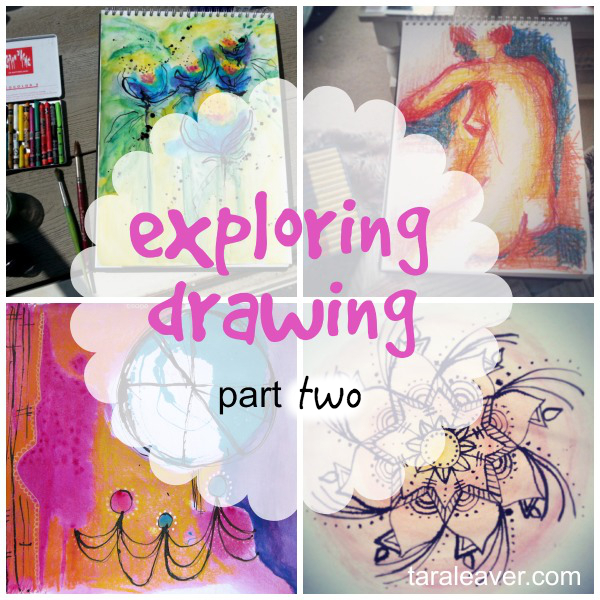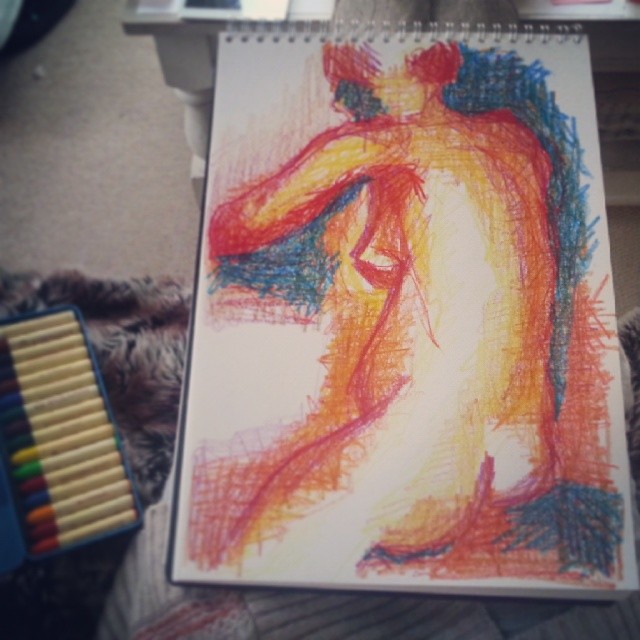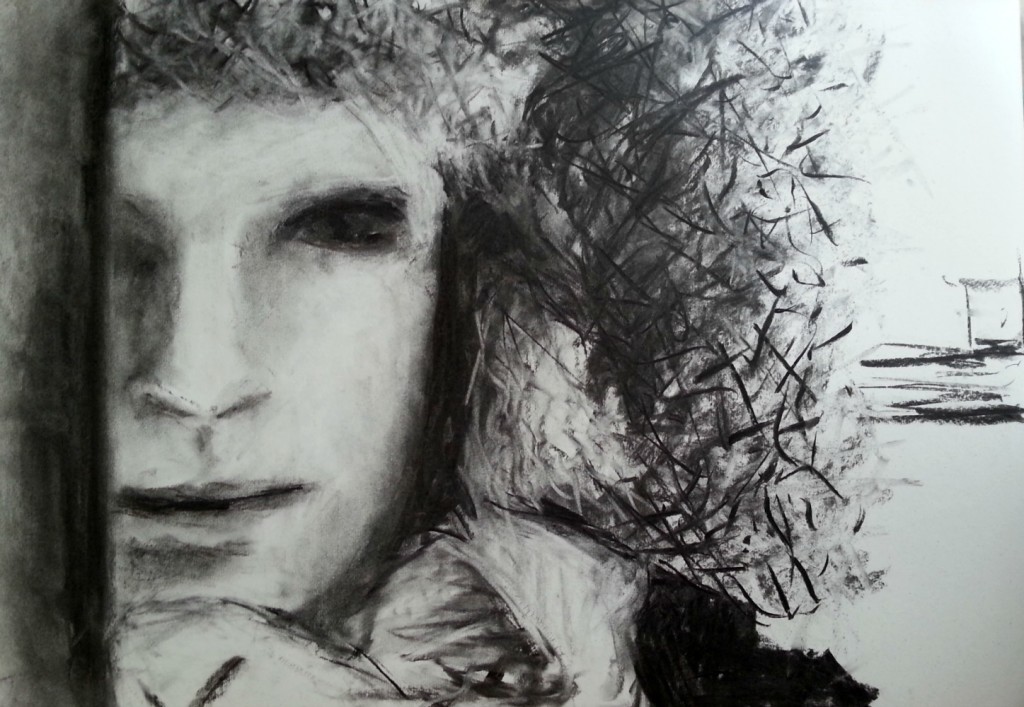{This post is part two in a two part series. You can find part one here.}
Last week we looked at some different approaches to drawing, as well as some artists who draw in uniquely recognisable ways.
Today I want to dive further into discovering how we can find out what our own unique way of drawing might be, with the maximum amount of fun in the process, naturally. 😊
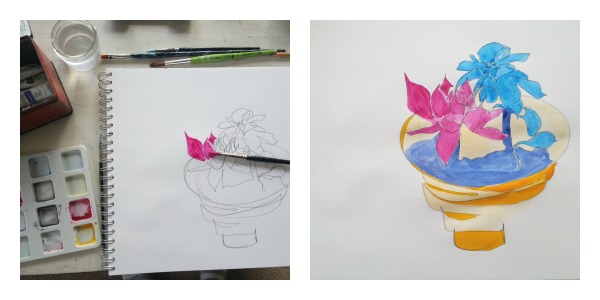
surprise : another blind contour drawing from me {pencil and gouache}. I had SO much fun with this. I recommend succulents – and plants generally – as a very rewarding blind contour drawing subject.
Injecting your drawings with your uniqueness
What will make your drawing your own?
I like to study and copy the works of other artists from time to time – as a way to learn, not to try to make art just like them or steal their work, obviously.
I think this has a place in discovering our own quirks and interests.
The main thing though is to keep doing it!
Draw and draw and draw. Try things. Experiment. Explore ideas, even if they don’t work out.
You do have to be prepared to make some crappy drawings if you want to make really good ones.
{And by ‘good’ I’m talking about pleasing to you, not necessarily good by anyone else’s standards.}
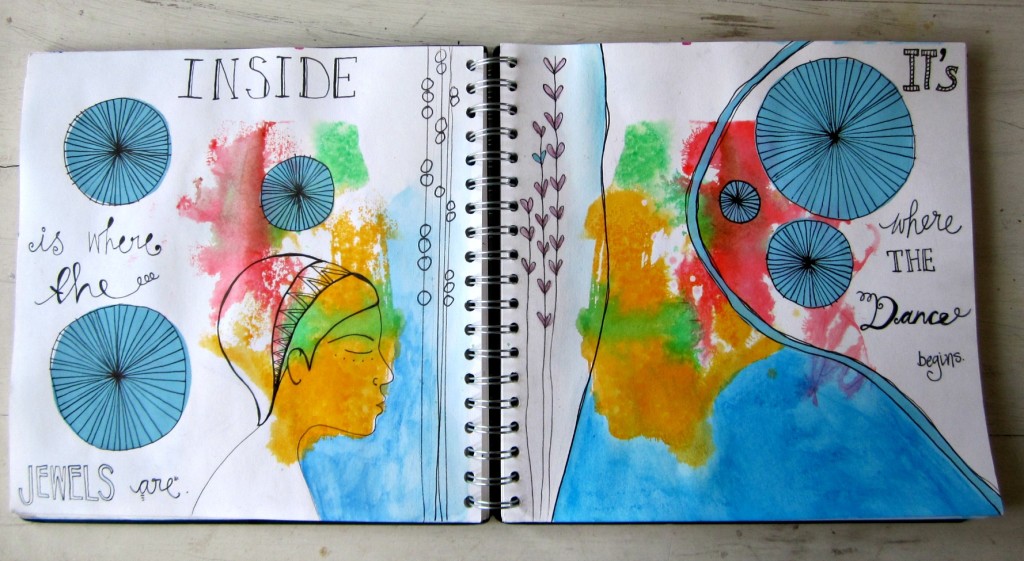
A rare double page spread made from an ink blot print. This came about intuitively and is embellished with a couple of lines from a poem I wrote. {Had fun with the lettering too!}
How can you do this?
I can only tell you what I do, and of course there will be as many approaches as there are people!
But if you need a jumping off point or two, feel free to use the following list of ideas to consider.
1. Subject
What subject{s} are you drawn to? {Pun intended, lol.}
What art do you repeatedly gravitate towards in galleries, on Pinterest, when you’re out in the world?
If you know my work you probably know I love figurative art, and more recently abstract landscape. I like other things too, but they are my main loves and I always return to them.
One good way to discover what attracts you as a subject is to get out there with your camera {any camera} and start photographing what catches your eye.
Don’t over think it, just take yourself on a photo walk and start snapping.
After a while you’ll start to see themes and repeated images in them.
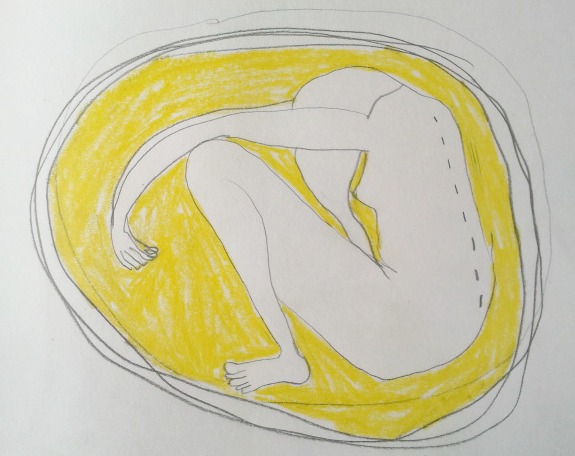
A strange figure drawing done without a reference and no plan. It feels meaningful in its awkwardness, despite not being my ‘usual’ figurative style.
If you already know what subject you love, you can start exploring how you most want to represent it.
2. Style
- Do you like street art, or cartoon art, or children’s book illustrations?
- Do you like botanical drawings, with their precision and detail?
- Do you like illustrated quotes and lettering?
- What about hyper realistic art that looks like photographs?
- Or naive folk art?
There are so many art styles to explore it might feel a bit overwhelming, and it’s likely that you will be ‘drawn’ to many {this keeps happening, lol}.
The best way I know to counter that overwhelm is to pick one and explore it a bit.
This is a growth process so let it take time.
I have a massive tome called The Art Book {aff link} which I recommend for a good rifle through art of all kinds.
I sometimes turn to it when I need a peek at the kind of art that inspires me to make my own.
Visit the library so you can refresh your inspiration over and over, and keep your eyes open and your camera or sketchbook handy for images and scenes that catch your eye when you’re out and about.
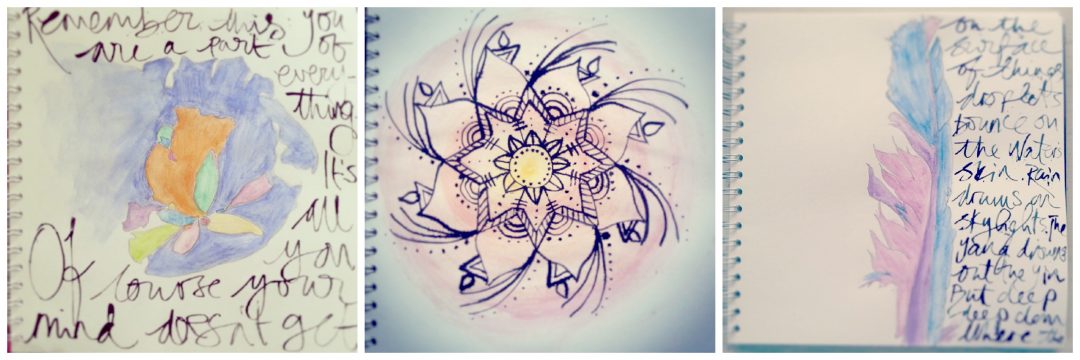
Three pages from a sketchbook where I was exploring a mix of blind contour, pen and ink, and expressive writing.
3. Line
Ah, line. How I do love you so. 😍
Lines are like people; they come in all sorts of personalities, many of which coexist harmoniously together.
{Some are a little more awkward, but that keeps things interesting.}
Even if all you have is a pencil and a piece of paper, or a piece of chalk and a paving stone, you can make beauty with lines.
From the simplicity of Picasso’s dove of peace or Matisse’s single line figure drawings, to intricate and epic renderings like these, there is a way to use line to express what you want to say in the way you want to say it.
For me, the excitement comes from repeated lines, wonky lines, looping and free roaming lines, which is partly why blind contour is my go to.
But lines can also be short and abrupt, cross-hatched, firm and deliberate, loose and light, close together for shading, sparse and minimal.
Try out as many kinds of line as you can think of, and see what feels really good to you.
Consider how the nature or personality of a certain type of line can help you express what you’re trying to say.
4. Colour
One look at my paintings and you’ll realise I’m quite the fan of colour. 😉
What’s interesting about that is that I never plan it that way.
I have even tried to make art with true to life colours, and every single time it ends up looking like an explosion in a colour factory.
{Wow, a colour factory; I don’t know what that is but it would be extremely cool and I would visit.}
- Do you lean towards bright, vivid ‘non local’ colours like me?
- Or do you like something more refined and delicate? Black and white?
- A soft palette of neutrals like Morandi’s quiet still lives?
- Something whimsical and childlike with primary colours, or something realistic?
Colour can transform an ok drawing into something really beautiful.
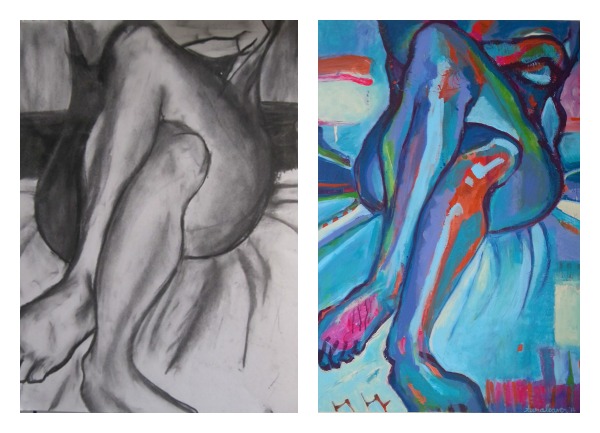
I love this charcoal drawing {done many years ago}, and I love even more the painting that came from it {done this year}.
5. Motifs
You’ll notice that some artists repeat certain motifs throughout their work.
It’s often how we recognise an artist’s work.
Think of Jennifer Mercede’s quirky animals, or Gillian Lee Smith‘s wistful figures in haunting settings.
I don’t believe that it’s necessary to be consistent with your work, unless perhaps you are selling it through galleries and need to maintain a certain aesthetic.
I’m not that consistent in some respects because I paint for pleasure and joy and my own learning; of course I love to sell my work but it’s not why I make art.
In a way, that gives me more freedom.
Besides, consistency begins to come naturally the more time you give to exploring.
However there are still motifs that I use again and again because I love them; circles, abstracted or distorted figures, layers of loops.
More recently I’ve been adding oil pastel line work to finish off acrylic paintings and loving how that looks.
What motifs do you like? Are you drawn to certain shapes or do certain images keep showing up in your work or in the work of others that you love?
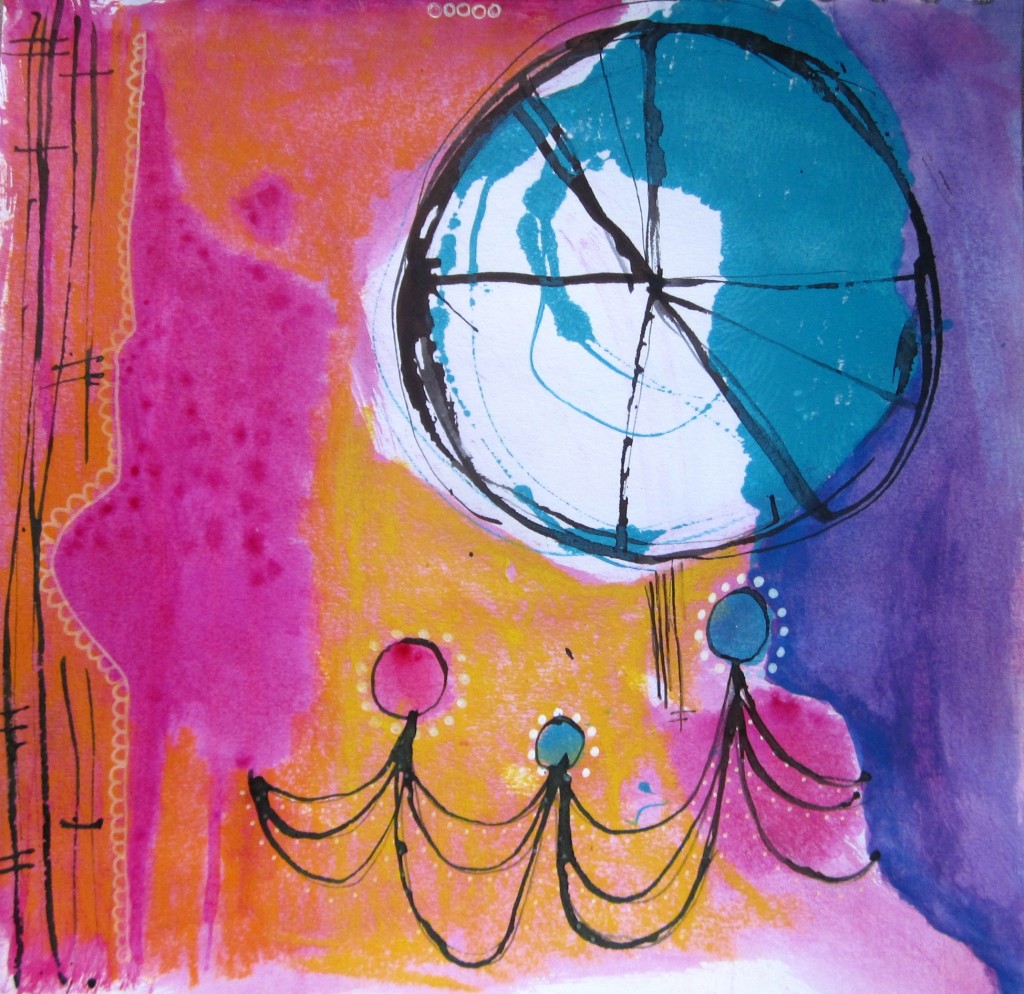
One of my favourite sketchbook pages ever; I even used it for the cover of my book. Completely intuitive, using colours and motifs – circles, loops, figure, lines – I return to again and again, often without realising.
6. Story/Message
This is something I am always intrigued by and yet so far haven’t created satisfactorily for myself.
I’d love my art to tell stories, but it tends to be more about colour and energy and a certain feeling, than something narrative.
That’s ok; I can still enjoy the narrative art of others, and I find that letting things percolate away, sometimes for years, can help bring out the things we’d like to say.
As my teacher would say, you can ask for what you want, but you can’t decide how it comes!
My friend Katherine Quinn makes beautiful, delicate narrative art.
Narrative art is often heavily symbolic too.
Like dreams, it can be decoded and the layers of meaning uncovered.
Gillian Lee Smith’s work, which I mentioned earlier, is another amazing example of narrative art.
Where Katherine’s is more whimsical and dreamy, Gillian’s is in a fine art style, with a haunting grittiness, a muted colour palette and beautiful loose mark making.
The key thing in all of this is to notice what you notice.
The more we train ourselves to look out for images, shapes, colours and whatever else catches our eye, the more we refine our ‘artist eyes’ and the more our personal style begins to emerge and develop.
Actually wait, there’s another key thing, and that is to take action. 💪
Looking at art is delicious, but it’s no substitute for getting your own supplies out, whatever they may be, and just having a go.
It doesn’t have to be a masterpiece.
I’m pretty anti-rules, but the closest I’ll get to one is that if it’s not fun, stop doing it {that way}.
This is about drawing to express yourself, to reveal yourself, to enjoy yourself, just like you did when you were five.
It can be about more than that of course, but this is where I start, and it’s pretty much where I stay.
Life is a lot more fun when you give yourself permission to stop adding weight to everything and start taking the open, experimental route.

